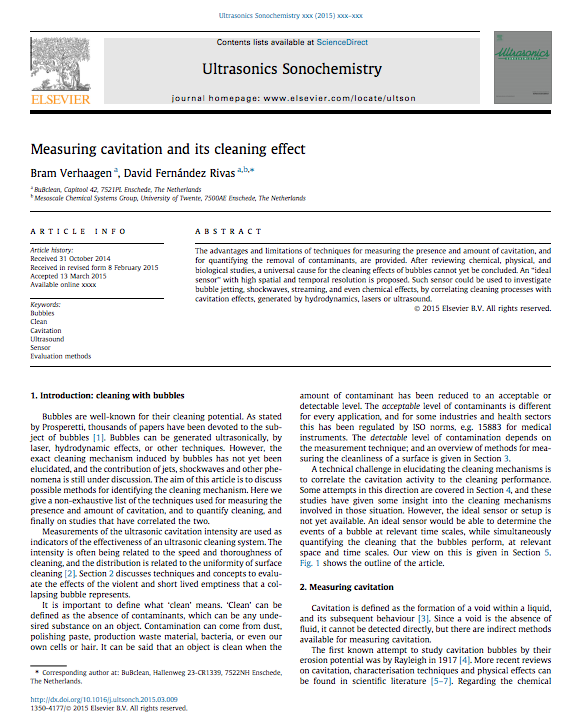In vakblad Ultrasonics Sonochemistry is een artikel verschenen van onze hand, waarin we verschillende technieken beschrijven om cavitatie te meten, maar ook om te bepalen of iets schoon is of niet. Daarbij gaan we ook in op de vraag: ‘wat is schoon?’.
In de AudioSlides hieronder geven we een korte uitleg over het artikel:
[iframe
marginheight=”0″
marginwidth=”0″
frameborder=”0″
style=”border: 0″
scrolling=”no”
width=”258″
height=”231″
src=”http://audioslides.elsevier.com//ViewerSmall.aspx?source=1&doi=10.1016/j.ultsonch.2015.03.009″]
Het artikel is bij ons op te vragen of hier te downloaden:
‘Measuring cavitation and its cleaning effect’.
Verhaagen, B and Fernandez Rivas, D.
Ultrasonics Sonochemistry, Special Issue ‘Cleaning with bubbles’. (In press)
DOI: j.ultsonch.2015.03.009
Samenvatting:
The advantages and limitations of techniques for measuring the presence and amount of cavitation, and for quantifying the removal of contaminants, are provided. After reviewing chemical, physical, and biological studies, a universal cause for the cleaning effects of bubbles cannot yet be concluded. An “ideal sensor” with high spatial and temporal resolution is proposed. Such sensor could be used to investigate bubble jetting, shockwaves, streaming, and even chemical effects, by correlating cleaning processes with cavitation effects, generated by hydrodynamics, lasers or ultrasound.




